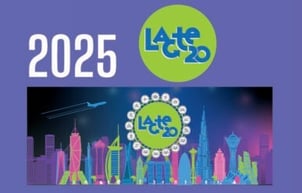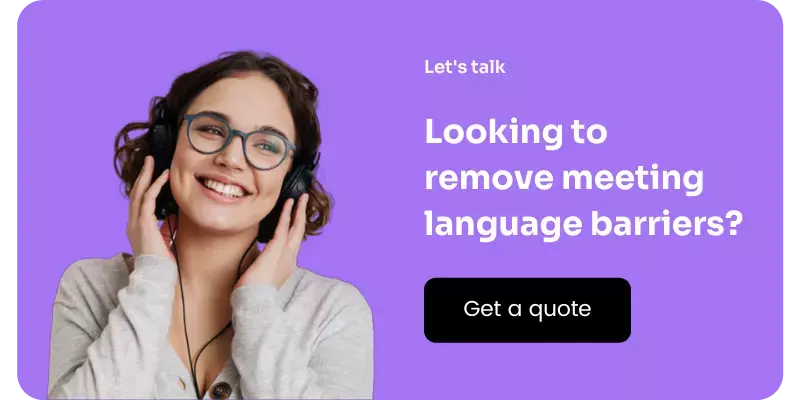It’s hard to believe that just a few years ago most events were not fully capable of reaching large multinational audiences. Now, web conferencing and video broadcasting platforms, like ON24, Zoom and Microsoft Teams, have removed physical limitations from virtual events. Event planners and marketing teams are now able to attract audiences from across the globe, as long as they have a strong internet connection. However, inefficient language translation remains a stark barrier of access to events and creates extra friction. Without a common language or translation tool, many people feel excluded and will not attend the event.
To overcome this barrier, organisers of virtual events need to make use of user-friendly multilingual translation solutions. There are two solutions to remove this friction: interpretation or AI translated captions. But what are the differences between these options? More importantly, how much do they cost? Let’s find out.
Understanding multilingual event translation services
At events where communication is key, it is necessary to use the help of interpreters or translators to communicate effectively. Often, the difference between translation and interpretation is confused. Interpretation deals with spoken language, while translation focuses on written content. Notably, translation happens over a period of time with extensive access to external resources, while interpretation occurs on the spot during a live scenario. To learn more about their differences, read our blog post further explaining translation, captions, interpretation and subtitles.
To have an engaging virtual event you need to have real-time interpretation or translation to ensure no one is left out of the conversation. One of the ways to do this is with Remote Simultaneous Interpretation (RSI) which allows for a multitude of languages to be covered, thereby making meetings more accessible. The right RSI solution is useful for hybrid, virtual and on-site events and usually involves cloud-based technology, such as Interprefy, to provide a virtual interpreter soft console, and user interfaces, like a mobile app or a language selector embedded in the online meeting platform, for the user to access interpretation. The interpreter is then able to translate whilst the talk is in progress using professional tools, into the language you have chosen.
With the advancements in AI technology, real-time translations are now possible. This allows for the generation of simultaneous automatic translation with live captioning. By making use of automatic, live closed captioning you can ensure better engagement, comprehension and accessibility to your event. Automated speech translation transcribes what your speakers are saying from one language into another, so your audience can read what is being said in real-time, in their preferred language. While AI translations cannot replicate the cultural and language sensitivities provided by human interpreters, AI-generated captions are a more than valid alternative to live interpretation in some cases.
How much does language translation and interpretation for online meetings and events cost?
There are many RSI and AI language translation services available, with the price and quality of each solution varying between providers. While each solution has its own differences, they both contribute to making your event more inclusive and able to reach a global audience. Often the right service provider will tailor their quote to match the scale and circumstance of each event — so event managers get the highest possible value for a reasonable price point.
Comparison: Interpretation vs. translation: which multi-language solution is best for your video conference?
|
Professional RSI Interpretation |
AI-translated captions |
|
| What the solution does |
|
|
| Solution benefits |
|
|
| Price comparison |
|
|
Create inclusive, engaging and global event experiences
While RSI and AI-translated captions are very different, they are both valuable additions to the virtual event realm. They cater towards providing an inclusive experience for global audiences. That’s why Interprefy provides both RSI and AI captions for multiple languages, so you can make the most out of any meeting or event. Our solutions are cost-effective, hassle-free and flexible for all users. Our products are already integrated with common event platforms like ON24, Hopin, Webex Events, and Microsoft Teams. With constant support from our dedicated team of technical experts, we’ll ensure your event runs smoothly, in multiple languages.
Want to see if our interpreting technology can help your event? Get in touch with us below.
Related articles:


%20(14)%20(1).png?width=1040&height=800&name=Blog%20Header%20(1600%20%C3%97%20900%20px)%20(14)%20(1).png)


 More download links
More download links



